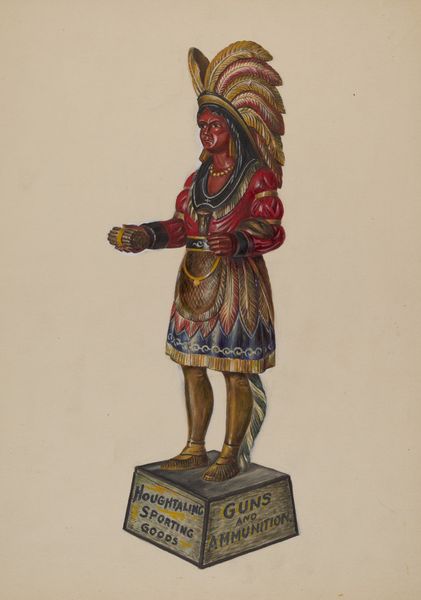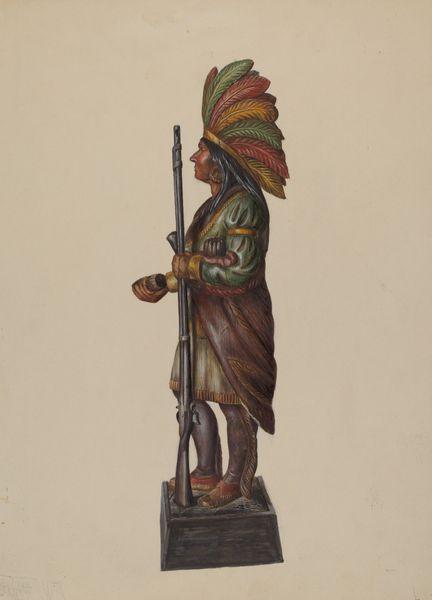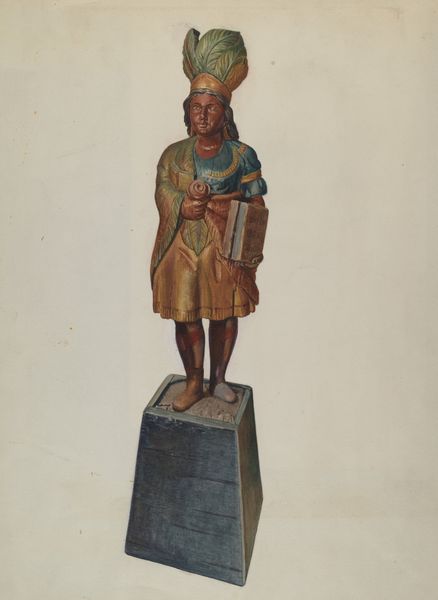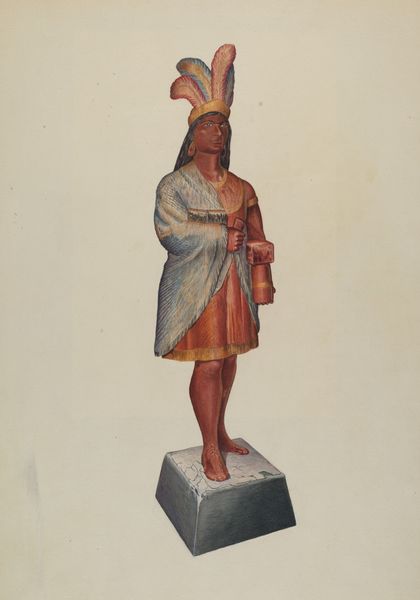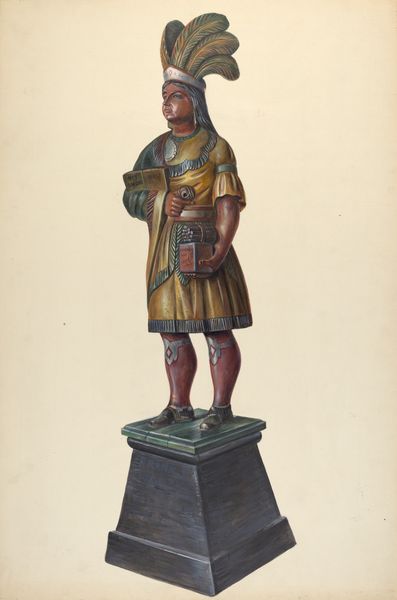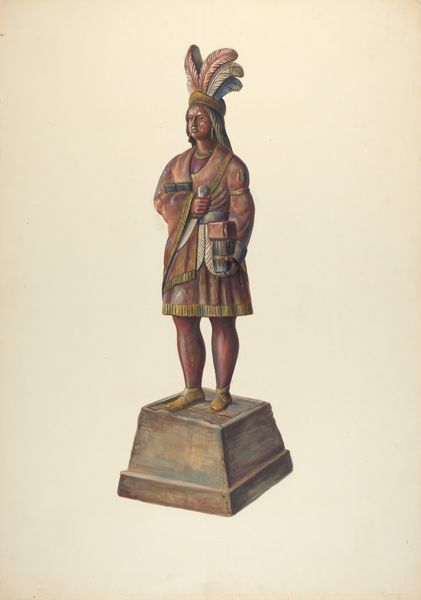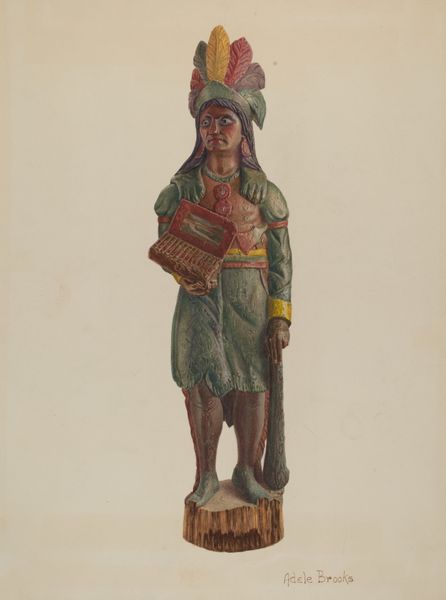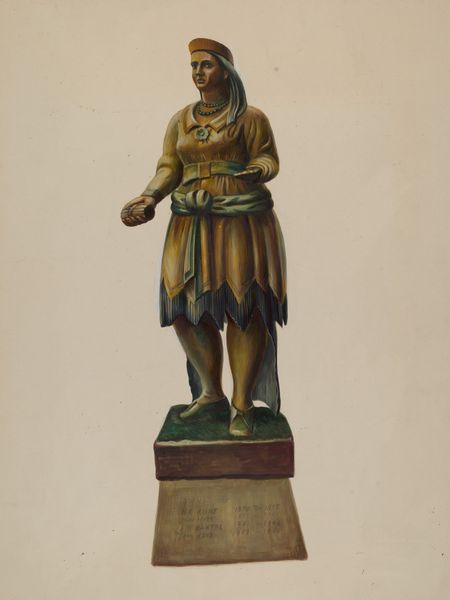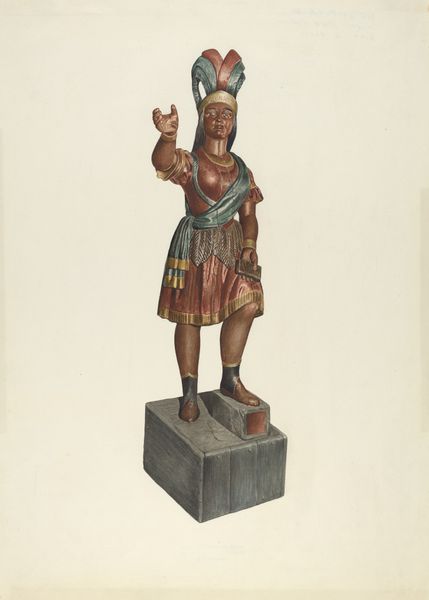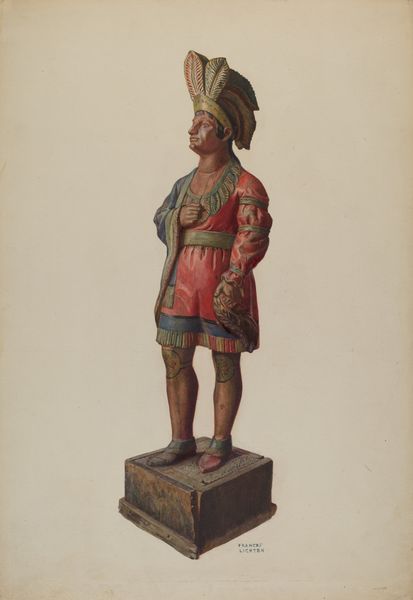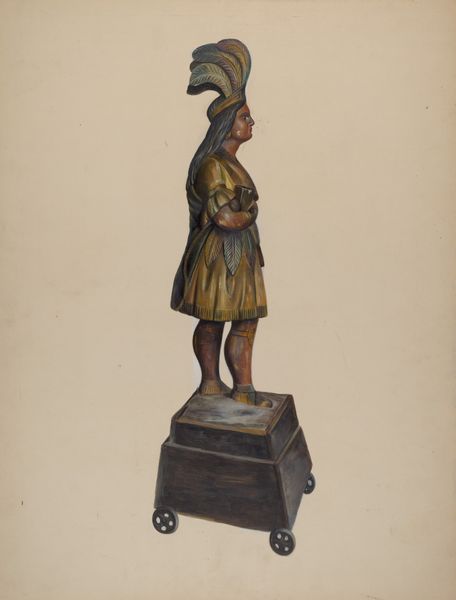
drawing, coloured-pencil, paper
#
portrait
#
drawing
#
coloured-pencil
#
caricature
#
paper
#
coloured pencil
#
watercolor
Dimensions: overall: 72.5 x 50.7 cm (28 9/16 x 19 15/16 in.) Original IAD Object: 45" high; 38" wide
Copyright: National Gallery of Art: CC0 1.0
Editor: This coloured pencil drawing is called "Cigar Store Indian," made around 1937 by Walter Hochstrasser. The figure seems so still and contained, almost melancholic. What can you tell me about this piece? Curator: The “Cigar Store Indian” is rich with layers of symbolic weight. While seemingly a straightforward representation, consider how the image carries emotional baggage and cultural appropriation. Hochstrasser's drawing reflects a time when such figures were commonplace outside tobacco shops, intended to draw in customers, but evolving into caricatures. Does this challenge our understanding of representation versus reality? Editor: It does, particularly regarding Indigenous representation. I hadn't really thought about them being caricatures. It makes me uncomfortable now, that such an image was created as advertising. How can it be seen as art, too? Curator: Because art is often a product of its time, reflecting societal attitudes even when those attitudes are problematic. In understanding the visual symbols – the headdress, the stoic posture, even the tobacco – we grasp the cultural memory being invoked. This piece offers us an opportunity to consider how these symbols are used and what they reveal about power dynamics and historical context. It’s also drawn using coloured pencil, lending a hand-crafted element that also signals folk-art. It is the act of the careful coloured drawing that signals the intention and artmaking. Editor: So, it's less about celebrating the imagery itself, but rather understanding what it represents about the culture that produced it? Curator: Precisely. The image serves as a point of departure to look at those complex intercultural exchanges and historical perceptions, opening an uncomfortable, but necessary dialogue. Editor: That gives me a lot to consider; a real intersection of commercial imagery, appropriation, and artistic technique. Curator: Yes, and seeing those symbols and thinking about those memories, might allow us to engage critically with how images impact our society today.
Comments
No comments
Be the first to comment and join the conversation on the ultimate creative platform.

